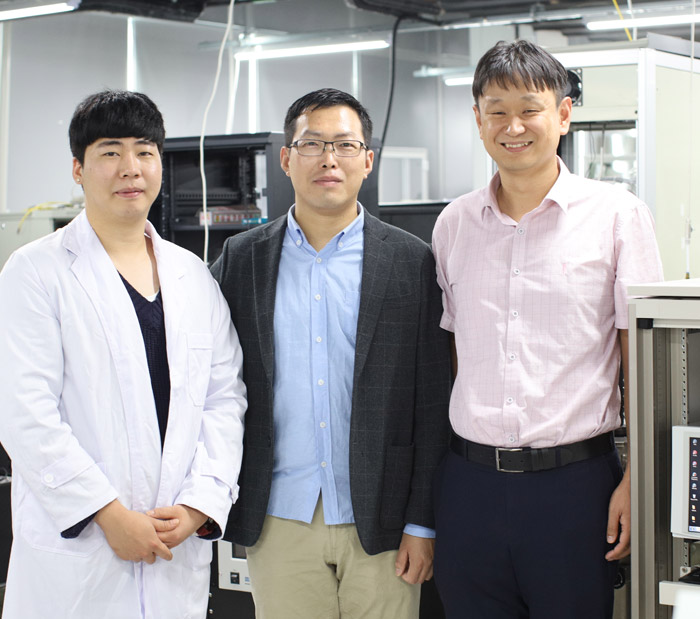Research Stories
Ultrafast, ultralow power consuming terabit-scale memory integration based on 2D materials
Self-selective memory based on 2D graphene and hexagonal boron nitride (h-BN) is now available for the IoT (internet of things) and AI (artificial intelligence) system.
Energy Science
Prof.
YANG, HEEJUN
Researcher SUN LINFENG
Prof. YANG’s research group recently reported a new conceptual memory system that can be integrated up to terabit-scale by using 2D graphene and h-BN. The 2D memory device operates with an ultralow power (micro-Jules) and a time constant of tens of nanoseconds, which is 100 times faster than current non-volatile memory devices (e.g., flash memory).
Unlike conventional phase change memory (PRAM) or resistance random access memory (RRAM), such high device integration with 2D materials has demonstrated various fabrication and materials issues. Moreover, most 2D semiconductors have shown not-reliable operations.
Prof. YANG’s team conceived a new conceptual memory device: combining volatile and non-volatile memory devices based on representative and most stable 2D materials; graphene and h-BN. Thus, the self-selective memory does not require a ‘selector device’ that is essential for other integrated devices. Moreover, the 2D materials allow device operation with 1000 times lower power consumption and 100 faster speed. Quantum tunneling through the 2D insulator and a reliable filament formation at the inert graphene were used for the operation.
Prof. YANG mentioned that the ‘self-selective memory’ is the first case to demonstrate the feasibility for large-scale memory device integration with 2D materials. While conventional oxide materials show the limitations on the operating power and speed, the self-selective memory will be widely used for the future memory applications in AI and other neuromorphic industry.
This research has been published in Nature Communications (IF=11.880) on July 18, 2019.
Self-selective memory with graphene and h-BN. A memory of ‘SKKU’ with 25 memory cells are demonstrated.


